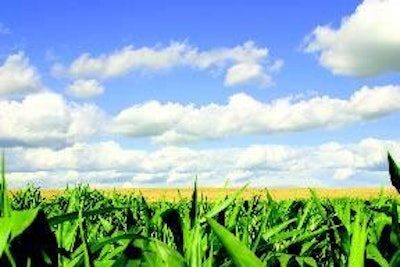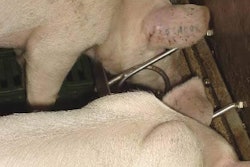
Price pressures look longer-lasting
No one can deny that there is a global food crisis. Rising prices for staple foods have affected all countries as a consequence of increasingly expensive grains and oil. Hardest hit are those places where the people do not have the money to adjust to the new situation. Some must spend at least three-quarters of their income on buying food. The higher prices have brought the threat of starvation in extreme cases and, in more countries, the prospect of political unrest.
We are now being told that the problem is not as short-lived as many had hoped. The basis may have been a combination of poor crops, emerging biofuel production, climate change and limited world energy supplies. Commodity prices also have been driven up by the extra demand coming from rapid economic growth in less developed countries. Food inflation also has been linked to more general inflationary trends worldwide.
A report released in recent weeks by United Nations Food and Agriculture Organisation (FAO) suggests we must expect that higher prices are here to stay. It bases this conclusion on a belief that purchasing power among consumers in most countries will stay strong and that oil price rises are now a constant feature of the marketplace. This is accompanied by a warning that the low carry-over stocks of grains seen so far in the new century will persist for the coming 10 years, providing the background for more price volatility.
Moreover, the FAO analysis regards the conversion of food crops into biofuels as a factor that will continue to lift commodity prices to higher average levels in the future. The significance of biofuel's effect to date can be judged easily from a new calculation quoted in the same report, that it accounted for 60% of the total increase in grain demand worldwide over the 2 years to the end of 2007.
Missing out on extra income
On a related subject, it is interesting to see official acknowledgement that the inflation in food prices has exceeded overall inflation rates in most countries. There are also clear signs that the price rises have occurred after the primary production stage. In other words, the extra money has gone to processors, wholesalers and retailers, not to producers.
Some rough estimates indicate that the share of the increase going to producers has rarely been more than 20% and was often just 10%.
Those low figures demonstrate why primary production internationally echoes the words of a cattle industry leader in the USA. He has commented that "while consumers are feeling the pinch from the rising cost of many foods, livestock producers are bearing most of the burden when it comes to meat production".
Corn crop outlook hit by bad weather
American reports about grain crop conditions in 2008 sound discouraging. They describe knock-on effects from persistently cold and wet conditions and even flooding in the Midwest grain-belt during the early part of the summer.
US Department of Agriculture (USDA) has therefore projected a lower yield of maize per hectare this year, alongside a reduction in the area of land planted for corn, that seems set to mean tight feed grain supplies both domestically and for export.
On USDA forecasts in early June, the US corn harvest in 2008 will be 10% smaller than a year ago. Carry-over stocks could be the lowest since 1996.
Unfortunately, the impact on world maize output for the crop year from October 2008 is likely to be a downturn to 775.3 million metric tons, on USDA figures, some 1.8% less than in the current period.
Research base needed to promote efficiency
Animal agriculture needs some determined leadership to take it forward in the new era of higher feed costs. At a meeting in Rome in June, the target was said to be more efficient feeding of farm livestock.
The occasion had been a government-level summit called by the United Nations to address global issues of food security. Various industry organisations were invited to attend to give their own view of possible actions. Among these was the International Feed Industry Federation.
Its president, Fred Stephens, said that governments should be working to achieve greater feeding efficiencies in their livestock sectors. There needed to be a greater emphasis and investment in livestock research and development that would bring about improved efficiencies. "The resolution of the current global food crisis requires a decisive technological jump' which can only come about by a substantial increase in the global and national commitment to agricultural research and development," he declared.
It would be hard to disagree with him. A better efficiency at converting feed grains in animal protein would benefit everyone. But the fact is that governments everywhere have been cutting back on their support and funding for establishments engaged in farm research. The first step must be to reverse that trend. PIGI

















